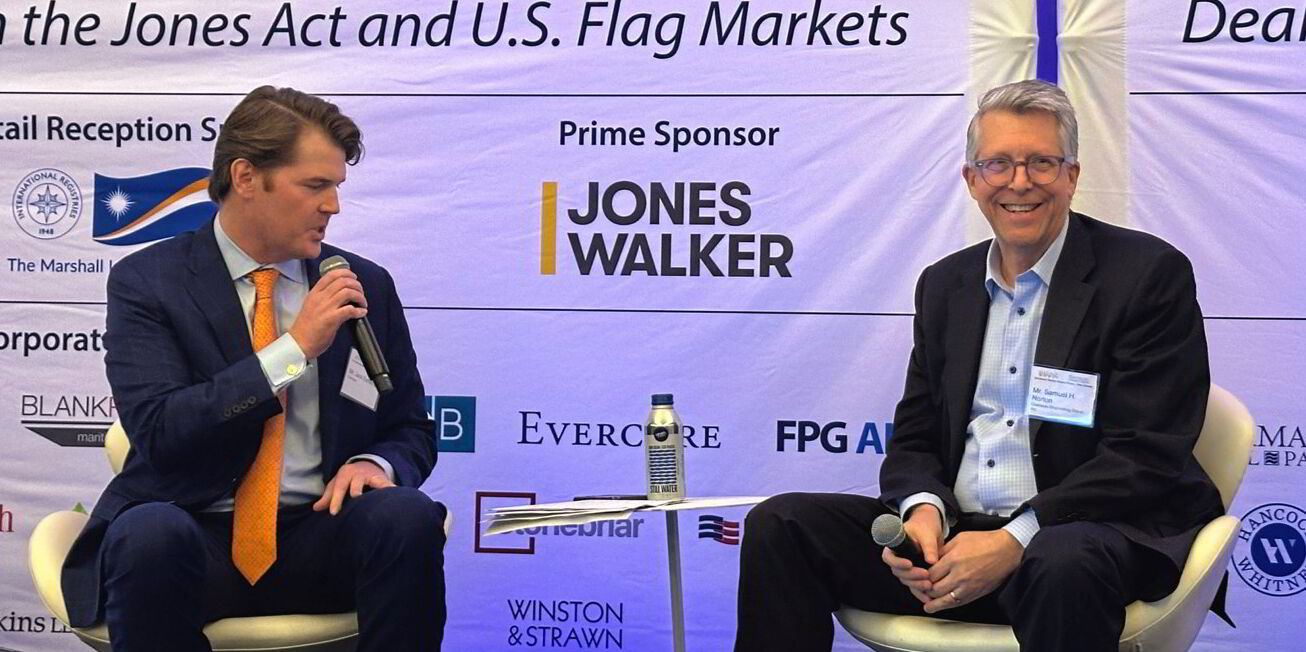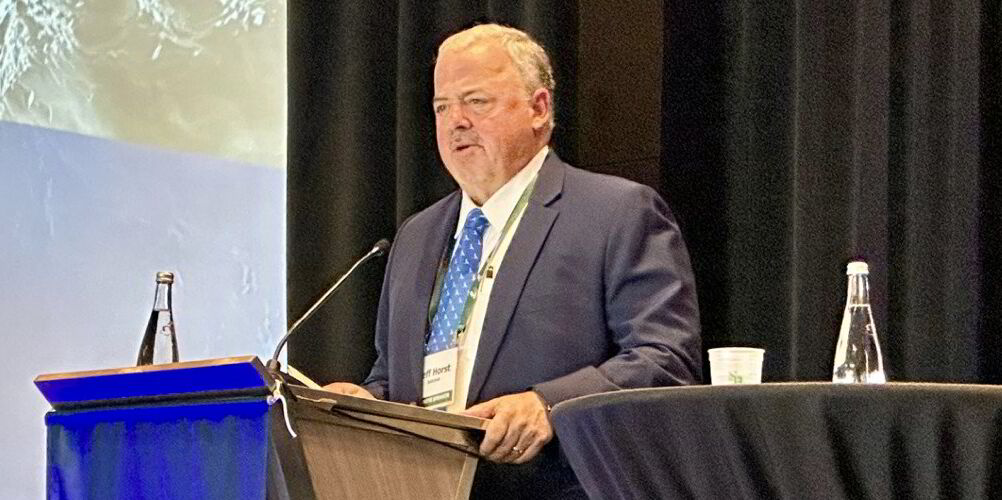A much-needed replacement of the US Jones Act tanker fleet is not likely to be in the cards anytime soon for a host of reasons, a leading executive told a finance conference on Thursday.
Overseas Shipholding Group chief executive Sam Norton delivered that sobering news to delegates at Marine Money’s annual New Orleans finance forum and he recapped his part in one of the year’s biggest consolidation deals.
Tampa-based OSG was taken private earlier this year in an all-cash acquisition valued at $930m after a long-term courtship that had its beginnings in 2017, Norton told the audience.
OSG is one of the the largest movers of Jones Act and US-flag petroleum cargoes, but Norton’s view on replacement of tankers in that sector is coloured by his assessment of the changing nature of oil companies that dominate the customer base.
“I’ve got to say I’m not optimistic you’re going to see a wave of new orders coming anytime soon,” Norton told Evercore managing director Jack Eshelman in an on-stage interview.
Evercore advised OSG on the Saltchuk deal.
“With the oil majors that represent our customer base, the balance of power has shifted from the production part of the company to the trading desks,” Norton said.
“They’re the principal value creators today. They have the authority over how capital is allocated. In most of the companies, the shipping groups that used to be very powerful have become more project managers and routers for the trading desk.”
Those same traders are highly reluctant to commit to anything exceeding a one-year time charter, he said, as they’re content to take their chances on market swings as long as their competitors are facing identical costs.
This essentially rules out prospects of the 10-year time charter that might be necessary to support a newbuilding project.
And then there is the cost, which Norton puts in the $200m range for a new Jones Act product tanker.
“That’s a big chunk of our operating capital just for one ship, even if you put a 10-year charter on that. It’s just not feasible today. If you decided to build two ships, that’s $400m to $500m. With residual value after 10 years, that’s still $250m to $350m.”
In comparison, Norton revealed that OSG’s capital base as a public company was just $350m.
“So you’re essentially betting your company on the residual value of two ships, which is hard to defend as a manager,” Norton said.
“If you’re talking about building a dozen ships as replacements for the Jones Act fleet, I just think it’s a long time before that’s going to happen.”

On a brighter note, Norton agreed with executives sitting on an earlier Jones Act and US-flag tanker panel who expressed optimism about government subsidies under the Maritime Security Program and more-recent Tanker Security Program, which both employ ships built outside the US.
Growth in those programmes stands beside bipartisan efforts to pass the Ships for America Act, a bill championed by Republican representative Mike Waltz and Democratic Florida senator Mark Kelly to revitalise US-flag shipping and shipbuilding.
“I think there are tremendous opportunities for the US flag and the US maritime industry to seek growth” Norton said. “The political winds are strongly behind that.”




